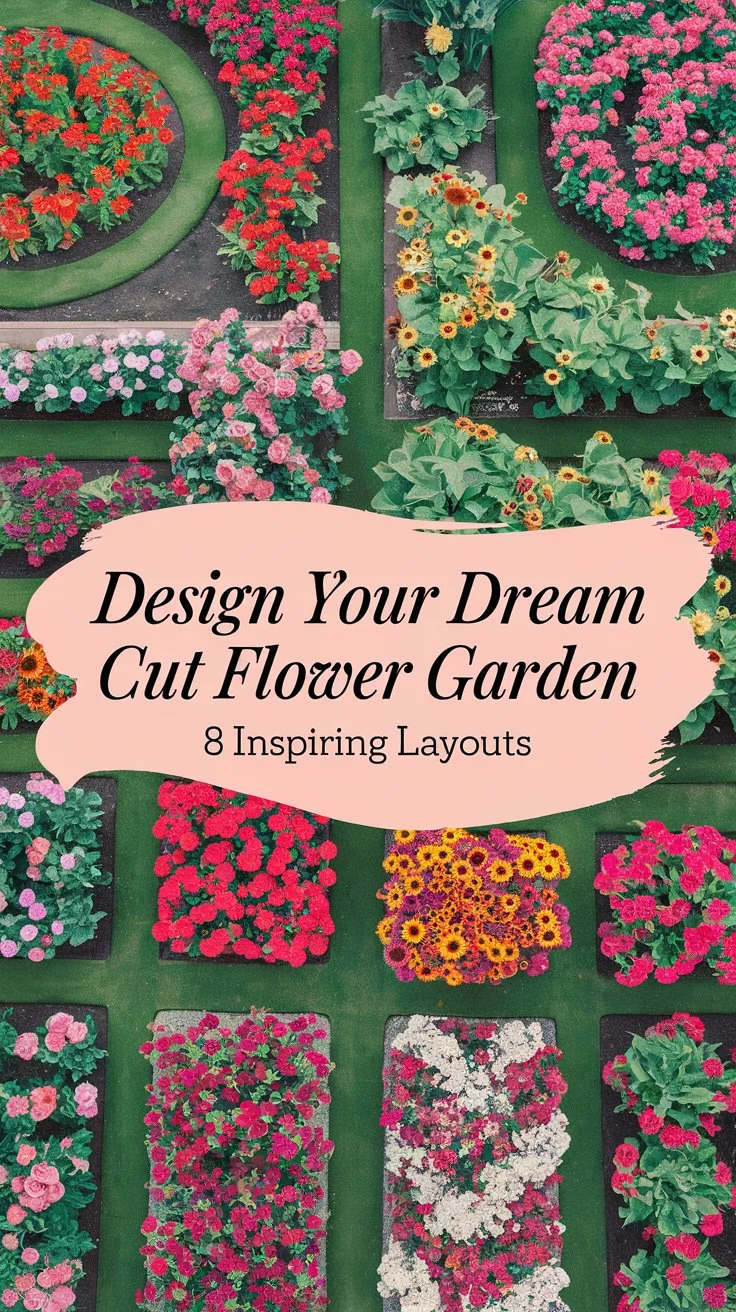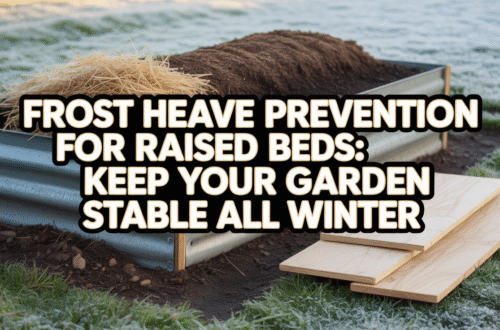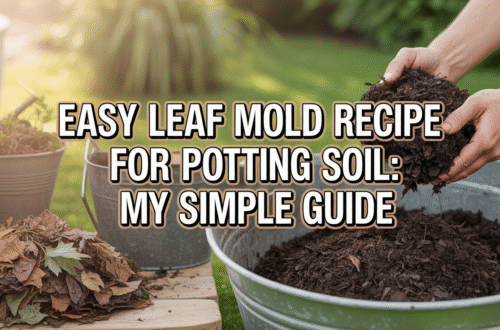Discover 8 efficient and beautiful cut flower garden layouts. Learn about companion planting, succession sowing, and maximizing your garden’s potential for a steady supply of fresh blooms.
Are you dreaming of a garden that provides you with fresh, beautiful flowers all season long? With the right planning and layout, you can transform your yard into a flourishing cut flower garden. In this guide, we’ll explore 8 inspiring garden layouts designed to give you a continuous supply of blooms. We’ll also cover essential techniques like companion planting and succession sowing to help you make the most of your floral oasis.
Why Plan Your Cut Flower Garden?
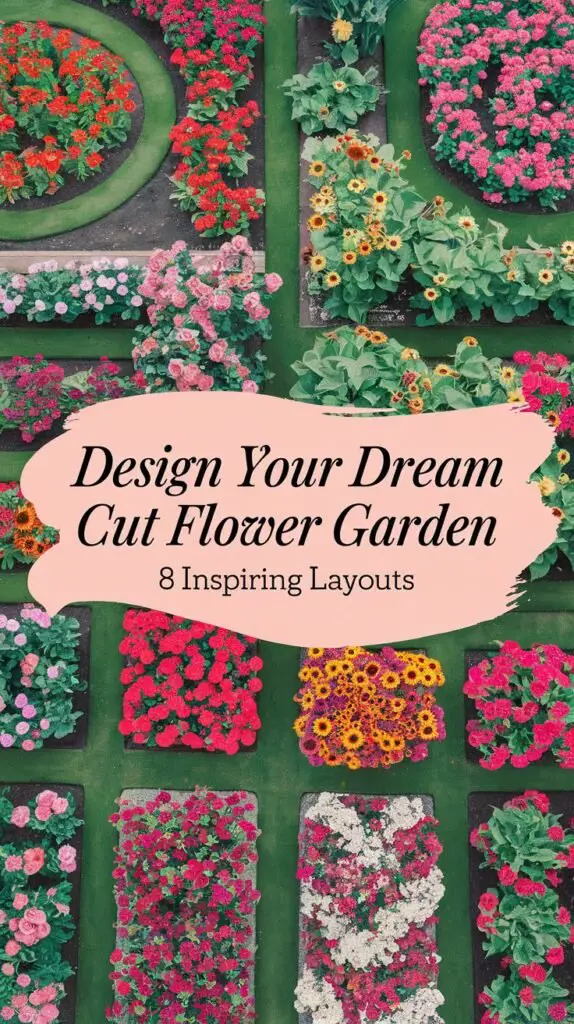
Before we dive into the layouts, let’s consider why careful planning is so important:
- Ensures a continuous supply of flowers
- Maximizes space efficiency
- Improves plant health through companion planting
- Creates a visually appealing garden
- Helps manage workload throughout the season
Now, let’s explore our 8 inspiring layouts!
1. The Classic Rectangle
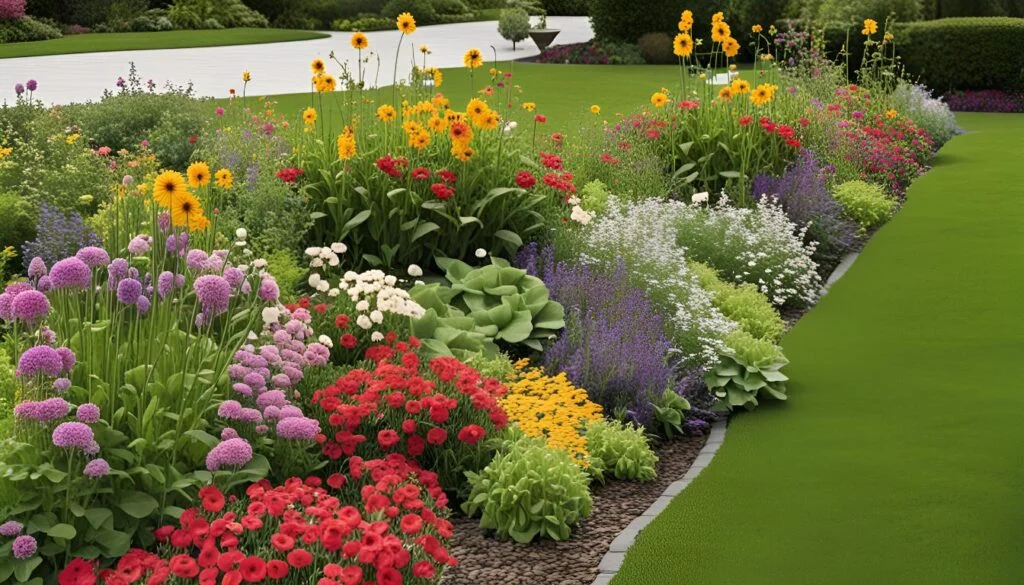
Design Features:
- Long, narrow beds with paths between
- Flowers arranged by height (tallest at back)
- Mix of annuals and perennials
Planting Tips:
- Use sturdy supports for tall flowers at the back
- Plant in groups of 3-5 for visual impact
- Include flowers with different bloom times for continuous color
2. The Circular Sundial

Design Features:
- Circular layout divided into “pie slice” sections
- Central focal point (like a sundial or birdbath)
- Radiating paths between sections
Planting Tips:
- Plant tallest flowers near the center
- Use repetition of colors or shapes for cohesion
- Include a mix of early, mid, and late-season bloomers in each section
3. The Cottage Garden
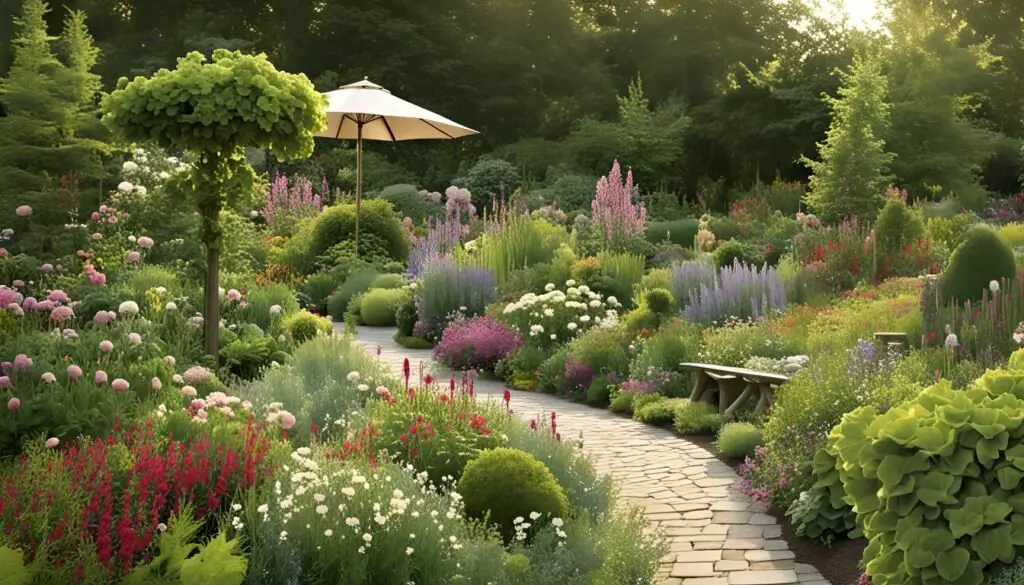
Design Features:
- Informal, naturalistic layout
- Dense, mixed plantings
- Winding paths
Planting Tips:
- Let plants self-seed for a natural look
- Include climbing flowers on trellises or fences
- Mix in herbs and foliage plants for texture
4. The Color Block Garden
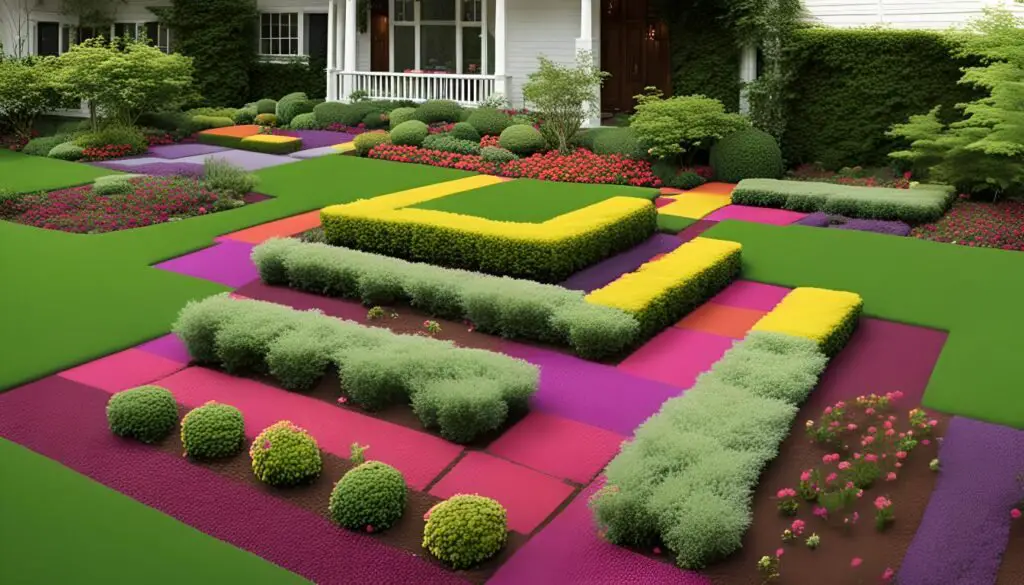
Design Features:
- Rectangular or square beds
- Each bed dedicated to a single color family
- Clear paths between color blocks
Planting Tips:
- Use various shades and tones within each color family
- Include flowers with different heights and textures
- Plant in drifts for maximum impact
5. The Raised Bed Square
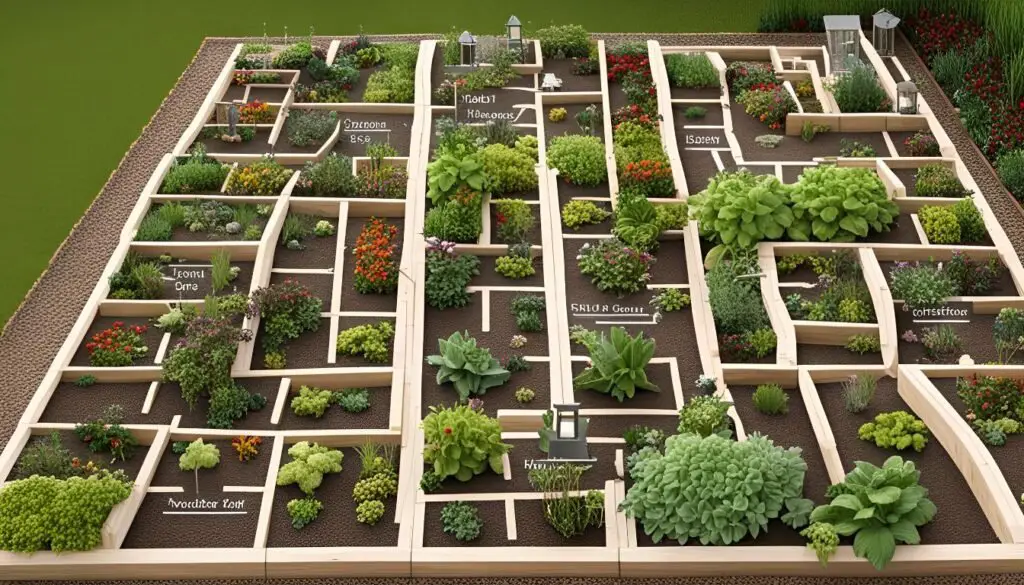
Design Features:
- Grid of raised beds (e.g., 4×4 layout)
- Wide paths for easy access
- Each bed can have a different theme or purpose
Planting Tips:
- Use companion planting within each bed
- Rotate crops annually to prevent soil depletion
- Include vertical elements (like trellises) in some beds
6. The Spiral Garden
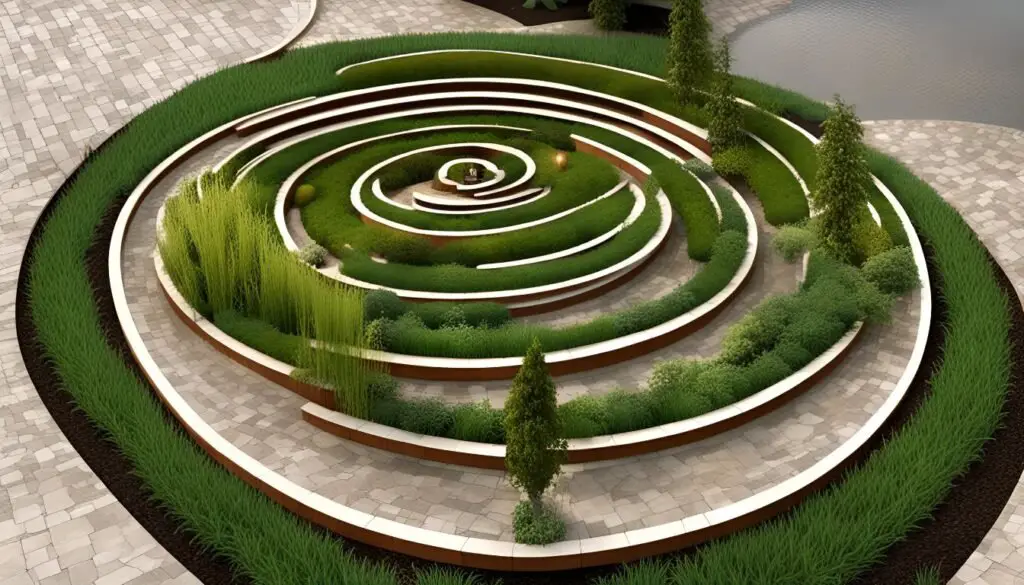
Design Features:
- Beds laid out in a spiral shape
- Central focal point
- Gradual increase in bed height towards center
Planting Tips:
- Plant low-growing flowers on the outer edges
- Use taller flowers and structures towards the center
- Incorporate fragrant flowers near paths for sensory appeal
7. The Four-Season Quadrant
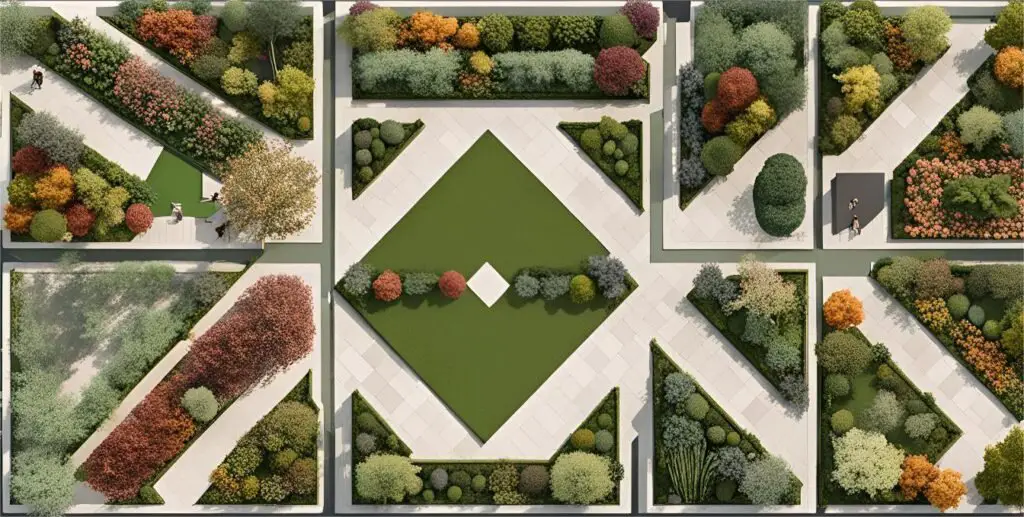
Design Features:
- Garden divided into four equal sections
- Each section focused on a different season
- Central meeting point of all sections
Planting Tips:
- Use bulbs and early bloomers in the spring section
- Plant heat-loving annuals in the summer quadrant
- Include late-blooming perennials in the fall section
- Plant evergreens and winter interest plants in the winter quadrant
8. The Vertical Paradise
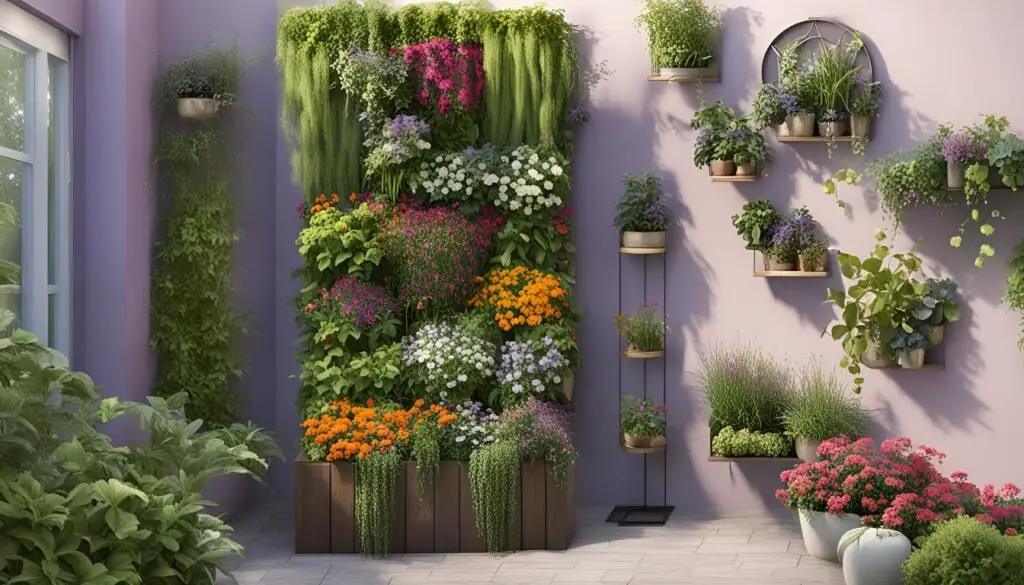
Design Features:
- Emphasis on vertical growing structures
- Tiered planters and hanging baskets
- Wall-mounted containers
Planting Tips:
- Use climbing flowers like sweet peas and clematis
- Plant trailing flowers in hanging baskets
- Incorporate tall, slender flowers like delphiniums and hollyhocks
Essential Techniques for Success
No matter which layout you choose, these techniques will help you maximize your garden’s potential:
Companion Planting
Pair plants that benefit each other. For example:
- Plant marigolds near zinnias to deter pests
- Grow basil near dahlias to improve their health
Succession Sowing
Plant seeds every 2-3 weeks for a continuous harvest:
- Works great for quick-growing flowers like cosmos and zinnias
- Ensures you always have blooms at their peak
Soil Preparation
Invest time in preparing your soil:
- Add organic matter like compost before planting
- Mulch beds to retain moisture and suppress weeds
Support Structures
Plan for support from the start:
- Install trellises, stakes, or netting before plants get too big
- Use sturdy materials that can withstand wind and rain
Conclusion
Designing your dream cut flower garden is an exciting journey. Whether you choose the classic rectangle, the whimsical spiral, or any layout in between, the key is to create a space that brings you joy and provides a steady stream of beautiful blooms. Remember to consider your specific growing conditions, the flowers you love most, and how much time you can dedicate to gardening.
With these 8 inspiring layouts and essential techniques, you’re well on your way to creating a flourishing floral oasis. Happy gardening!
Learn more about companion planting for flowers
Discover tips for succession planting in flower gardens
Remember, the perfect garden is one that evolves with you. Don’t be afraid to experiment, adapt, and most importantly, enjoy the process of creating your very own cut flower paradise!

